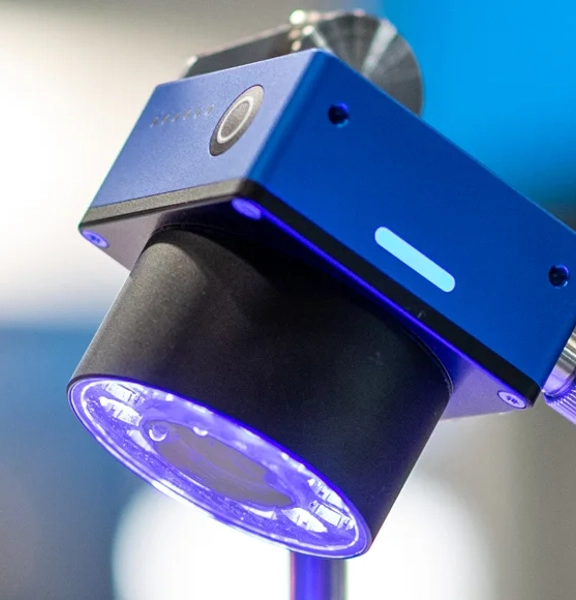Become a member
Take advantage of exclusive member benefits, world class events, networking and specialist support








 Become a member
Become a member 


 Autonomous mobile robots & Guides vehicles’
Advanced robotics
Autonomous mobile robots & Guides vehicles’
Advanced robotics

As the benefits of machine vision become more widespread and the perceived risks associated with undertaking a new machine vision project have decreased more and more manufacturing companies are seeking to implement vision systems in their production processes as part of their commitment to enhancing quality.
Vision System suppliers and distributors can offer a multitude of product and application-orientated systems which end users can install and support with minimal effort. However, for more challenging vision applications; where the distinction between a good or bad product is critical or where the installation set-up is complex a Vision System Integrator can be key to the success of the project.
A Vision System Integrator is an expert who invests time to understand a customer's unique requirements and will design and build a vision solution that meets the customer's specific manufacturing needs in terms of performance, reliability and adaptability. Often this means Vision System Integrators are undertaking one-of-a-kind projects; specifying and configuring systems to a customer's requirements. Examples of such projects include the integration of cameras into existing production lines, vision systems combined with ancillary equipment such as conveyors for product rejection, pick and place, robotics or the provision of stand-alone inspections, separate from the process.
As the range of vision technology available is so vast, integrators often concentrate on niche areas e.g. industries such as:
Many integrators are highly skilled engineers able to add value to a project through the development of their own application-specific software, or through their experience in combining vision systems with material handling. At all times an integrator will work closely with machine vision suppliers; using their support for tried and tested applications and ensuring the technology available is used to the customer's greatest advantage.
The services offered by Vision System Integrators can vary from the provision and installation of cameras and communications to complete turnkey inspection systems complete with product handling, validation, training and ongoing support once in production.
Matching an Integrator’s experience with your project requirements and expectations will provide a fruitful partnership and is critical in ensuring the successful realisation of any vision project.

Projects involving the integration of cameras into existing production lines, will generally require the combination of vision systems with ancillary equipment such as conveyors, product rejection mechanisms, pick and place and robotics as well as production control systems, or the provision of stand-alone inspection systems separate to the process. This requires expertise in fields as diverse as mechanical design, mechanical handling and transport systems, software , electronics, robotics, control systems and factory networks and CAD. A dedicated user interface will also be required. Some vision integrators will work with a machine builder partner to deliver the solution, while others will undertake the complete project themselves. In addition, it is important to have a good understanding of the specific requirements and standards required in different industries. This could range from environmental considerations such as hygiene and washdown requirements in the food and beverage industries to the need for part traceability and identification in safety-critical industries such as the aerospace industry, to the security and auditing requirements for 21 CFR Part 11 validation in the healthcare and pharmaceutical industries.
The process begins by understanding the customer’s unique requirements to develop proposals to meet the specific manufacturing needs in terms of performance, reliability and adaptability. Typical factors to be considered could include the linear speed of the system; the number of parts per minute for inspection, the product spacing and orientation and whether they arrive singly or in an array. These latter factors are important for the reject process, which must be configured so that the correct item is rejected and that the system can be certain that the correct item has indeed been rejected. When these and all the other factors are assessed, a detailed project proposal can be prepared. Once this is accepted, there are several discrete stages for an integration project which would include proof of process.
The proof of process phase is crucial. This essentially allows a preliminary vision system to be designed, built and tested on real-life samples under conditions as close to production line conditions as possible. This is where the key decisions about individual vision components and their compatibility to work in a system are evaluated. Timing is always a key issue, so the choice between an area scan or line scan camera may be influenced by the image processing and measurement time required, since image processing using a line scan camera cannot be completed until the object has passed by the sensor. Similarly, the use of a fast read-out area scan camera may give the extra time needed for complex image processing. Then there are the physical considerations of mounting a camera and lens. Once the proof of process is deemed satisfactory, the system can be scaled up to the production-line environment. Proof of process is a relatively low-cost exercise, compared to the overall project. Ultimately the proof of process needs to prove the robustness of an inspection – and be capable of identifying all necessary faults without producing false waste.
The culmination of the project is the installation and commissioning of the vision system on site. Ultimately the systems integrator is responsible for ensuring that the system installed will run consistently for years to come and not just for a short demonstration phase.
UKIVA members can offer further advice regarding End of Line Inspection.